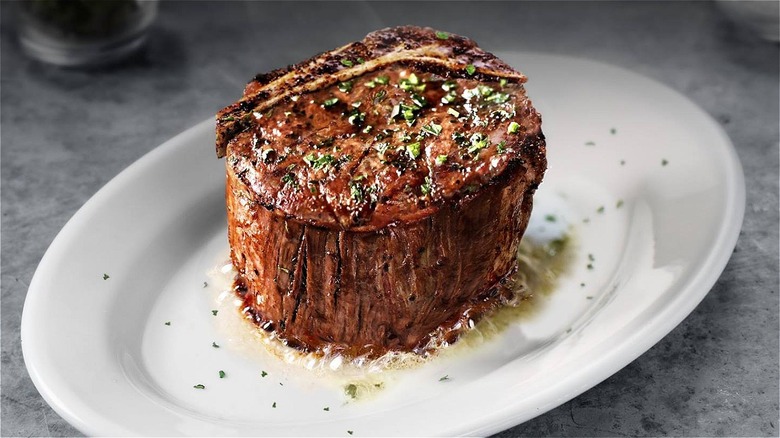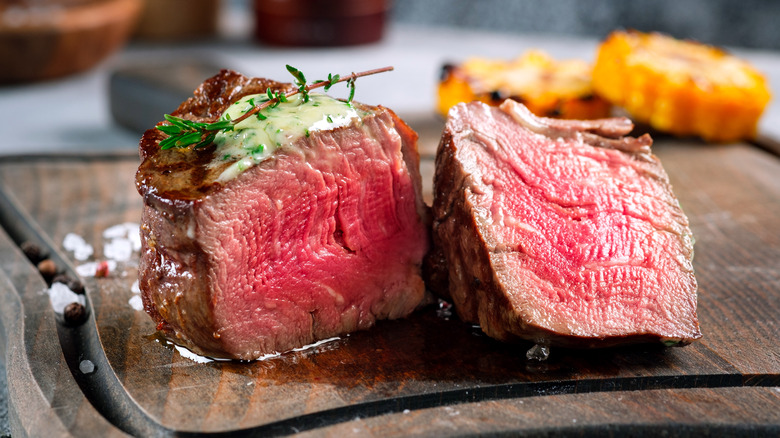The Bone-In Filet Could Be The Best Dish To Order At Ruth's Chris
Steakhouse aficionados are no stranger to Ruth's Chris Steak House, but for those who are uninitiated, this American institution has been serving sizzling hot steaks since owner Ruth Fertel bought her first location in 1965. What sets Ruth's Chris apart from the bevy of high-end steakhouses is not just the fact that plates come to the table searing hot with a layer of bubbling butter keeping the steak warm, juicy, and flavorful. The restaurant also uses a uniquely-designed broiler that sears every cut of meat to perfection. As proven by the restaurant's success, there really is no wrong choice at Ruth's Chris However, there's an argument to be made that the bone-in filet is the best dish you could order there.
Everyone's familiar with filet mignon — it's plump, it's tender, and it's really expensive. The standard filet, whether ordered in fancy steakhouses or at your local Applebee's, is typically cooked without a bone so as not to obstruct the perfectly cylindrical shape of the meat. Plenty of other cuts are renowned for their bone-in status, however, such as bone-in ribeyes, T-bone steaks, and porterhouses, but filet mignon is not among them. Bone-in filets therefore seem like a less ideal choice, but what they lose in perfect presentation, they make up for in eating experience, especially when it comes to succulent texture.
What makes the bone-in filet so good?
The thing that puts filet mignon in a special class of its own is its luxuriously tender texture compared to other steaks. Filets come from the tenderloin, a band of muscle that sits under the rib cage and receives very little physical exertion throughout a cow's life. Thanks to that lack of movement this meat develops almost none of the toughness associated with more active muscles, like chuck or brisket. While it does lack the fat and marbling of other primal cuts like ribeye and skirt steak, filet mignon is a wonderful morsel of meat that needs little enhancement. But what if there was a way to do so anyway?
Bone-in filet outclasses its boneless brethren in how it interacts with the grill. A common misconception is that bone adds flavor in the form of marrow, which gets transferred to the steak during cooking. While Serious Eats found that this isn't true, the real benefit of the bone lies in its ability to insulate meat from direct heat. The outer rims of steaks that aren't covered in bone or fat cap dry out faster, so leaving the bone attached to the filet results in juicier bites of meat the closer you get to the bone. Couple that fact with Ruth's Chris' quality, and you have potentially the most tender, juicy cut of meat money can buy. You're welcome.

